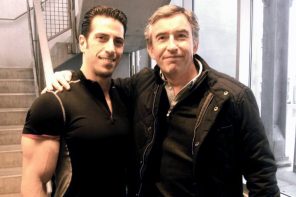In Boston, the American Revolution dies hard.
Its spirit lives on in the Museum of Fine Arts’ knowing portrait of Paul Revere and in the hoodies and other items sold at Faneuil Hall and Quincy Market. It wafts through meeting houses and soars above monuments, blazing across names like Bunker Hill and Charlestown.
It was in Charlestown, the oldest of the city’s neighborhoods, that my family gathered recently for a celebration. Niece Lynn and husband Ted, who live in a neighboring town, were christening their second child, William. So my sister Jana once again found the perfect home away from home for us, while our sister Gina — one of the proud grandmas — chauffeured me north with her trusty Chihuahua, the ever-feisty Fausto, along for the ride.
In truth, this gang doesn’t need a celebration for a road trip to Beantown, though it certainly sweetens the occasion. Our people hail from the Massachusetts mill cities of Lowell and New Bedford. Our summers were spent rooting for the New York Yankees against the Boston Red Sox at Fenway Park. (Hey, just because the family was from Red Sox Nation didn’t mean we were of Red Sox Nation.) And we all seem to have inherited the history gene. In charming Charlestown — where the 2.5-mile Freedom Trail culminates in a tony square of lamplit, brick, copper-coffered townhouses crowned by the Bunker Hill Monument — we found enough history to slake even our thirst.
Our nights may have been taken up with intensely competitive games of May I, an increasingly complicated spin on rummy, and an encore viewing of Netflix’s addictive “The Crown.” (Yes, we got the irony.) But our days were filled with the love of liberty.
Given that our Monument Avenue rental looked up at the Bunker Hill Monument, we began at the Freedom Trail’s end. But what an end. There can be few more stirring sights than that of the 221-foot granite obelisk that commemorates the first time the ragtag Colonists held their own against the mighty British Army, on June 17, 1775.
“Don’t fire until you see the whites of their eyes,” Col. William Prescott is said to have commanded, steadying his charges. Today, he commands Monument Square and a stunning view of the neon-lit city beyond from atop Breed’s Hill, where the battle was actually fought. (It was originally erroneously called the Battle of Bunker Hill and that is the way history rolls.)
No doubt all of this is explained in the Bunker Hill Museum — you have to love a city with a museum seemingly every five feet — but we sea lovers had a date with “Old Ironsides” down at the Charlestown Navy Yard, another stop on the Trail.
Old Ironsides is the affectionate nickname for the USS Constitution, launched in Boston in 1797. She earned that nickname when she tangled with the British frigate HMS Guerrière during the War of 1812. As cannonballs appeared to bounce off the Constitution’s sides, one crewmember exclaimed that she was made of iron. (The hull is actually a three-layer “sandwich” of live and white oak.)
Old Ironsides’ story is told in the USS Constitution Museum, an excellent family outing with enough detailed displays for military and maritime history buffs and enough interactive stuff for the kids. While Jana and sons Andrew and James toured the museum, I found myself moved by a documentary on how the Constitution has come full circle. She defended American freedom in a hour of peril, and when she began to fade in the early 20th century, Americans, particularly schoolchildren, rallied ’round her, sending in their pennies for her refurbishment.
Today the Constitution — still a commissioned U.S. Navy warship with a crew of officers and enlistees — is dry-docked at the Charlestown Navy Yard for one of her major periodic restorations, during which you can visit. All of us signed our names to pieces of copper that will be used in her hull. It’s a good feeling knowing that when the Constitution sails again, she’ll be taking a little bit of us and her other admirers with her.
On a 20-degree day, we followed the Freedom Trail gamely into Boston proper, stopping by the Old State House, the Old North Church and the Paul Revere House along the way. Then James and I — each in his own way a rebel without a pause — broke off from the group and took the T to the Museum of Fine Arts, where we feasted on butternut squash soup and field greens (me) and an Angus beef cheeseburger (he) in the three-story New American Café, watched over by Dale Chihuly’s “Lime Green Icicle Tower” (2011). But even amid such culinary modernism, historical Boston waited. Overlooking the café in the Americas Collections was our old friend Paul Revere, clutching a piece of his silverwork in John Singleton Copley’s portrait and stroking his chin as he gazed out at us taking our full measure of him.
Later as we sped past Copley Place, Square and Plaza on our way to Faneuil Hall and Quincy Market in a taxi, I explained to James that it was all the same Copley. As Lincoln would later observe, “We cannot escape history.”
And so it was fitting that we should wind up our last night in Charlestown at The Warren Tavern, built in 1780 and named in memory of Dr. Joseph Warren, who spurred pal Revere on his famous midnight ride to warn Lexington about the advancing Redcoats and died valiantly at the Battle of Bunker Hill.
We supped on hearty pub fare, including shepherd’s and chicken pot pies. It was a most congenial end to our historic visit and had Revere wandered in from some ghostly mission, we surely would’ve treated him to a pint.





